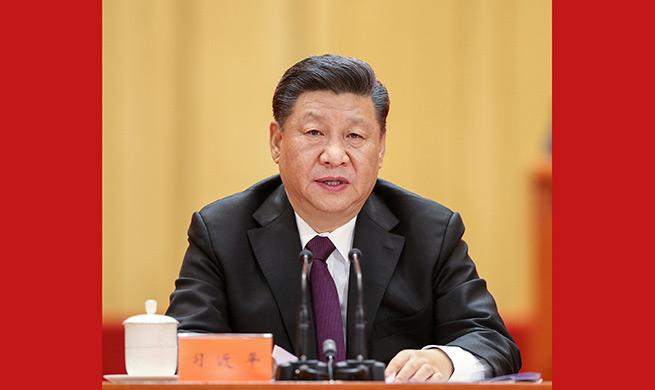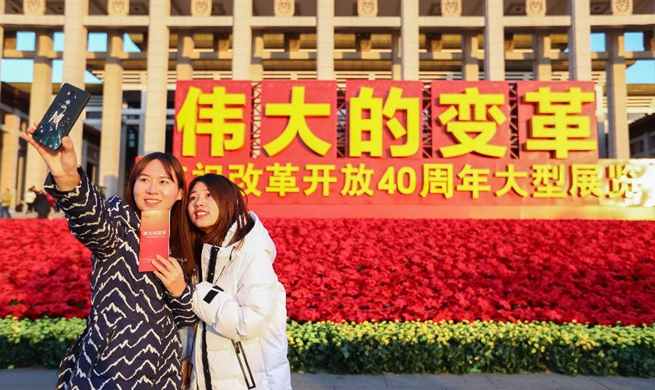ROME, Dec. 18 (Xinhua) -- Italy's trade surplus is shrinking, as the dramatic rise in Italian exports that started last year continued to slow.
According to the latest data from Italy's National Statistics Institute, ISTAT, Italian exports over the first ten months of the year outpaced imports by 32.3 billion euros (36.7 billion U.S. dollars). That is 5.6 billion euros (6.4 billion U.S. dollars) less than over the same period last year, a drop of nearly 15 percent.
For October alone, the difference was even more dramatic: the trade surplus was 3.8 billion euros (4.3 billion U.S. dollars), nearly a quarter less than during the same month in 2017.
In terms of value, Italy is the European Union's second largest exporter -- after Germany -- which means its economy is particularly dependent on its goods and services selling abroad.
Exports did grow in October: they totaled 43.7 billion euros (49.7 billion U.S. dollars), 9.6 percent more than in October 2017. But imports grew even faster, increasing by 14.2 percent to 39.9 billion euros (45.6 billion U.S. dollars).
Figures in a new research report from SACE, a Rome-based think tank, were in line with those from ISTAT. But SACE further broke the figures down to show that it is predominantly trade with countries outside the European Union that failed to keep pace with imports.
One important factor in the calculations is trade with Russia and Turkey, both of which have trailed off dramatically due to European Union sanctions against those countries. But increases in trade with the United States (up more than 22 percent compared to 2017 figures), along with Germany, China and petroleum-producing countries helped balance that out.
In contrast, Italian imports from China (up more than 25 percent year on year), petroleum producing countries (up 34 percent), and the United States (up 16 percent) helped Italian imports close the gap on exports.
The smaller trade surplus came despite a relatively weak euro currency -- a weak currency usually makes products sold abroad less expensive in relative terms and those imported more expensive -- as well as gross domestic product growth of less than 1 percent over the last four quarters.
According to Stefania Tomasini, chief economist with Prometeia, a consultancy, the narrowing of Italy's trade surplus is part of an international trend. "This trend is having an impact on countries across Europe, even in Germany," Tomasini told Xinhua.
She said that the rise in imports was due to higher petroleum use as well as more purchases of foreign-made automobiles. Fiat-Chrysler, Italy's lone domestic carmaker, has steadily lost market share in its home country.
Giuseppe De Arcangelis, an economist specializing on international issues at Rome's La Sapienza University, told Xinhua that the trend could be pushed by Italians shifting their allegiances to foreign products. But he added that the narrower spread should not be cause for concern.
"These statistics are cyclical and comparing trade today to that of last year means comparing it to a period where there was a boom in exports due to cheap oil and a weakening currency," De Arcangelis said. "Over the long term, the country is just returning to its historical averages."













